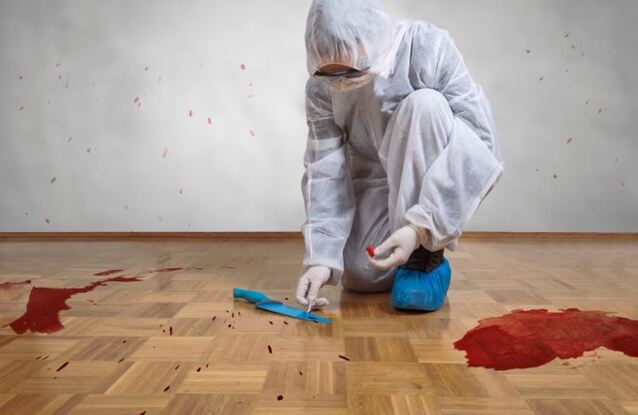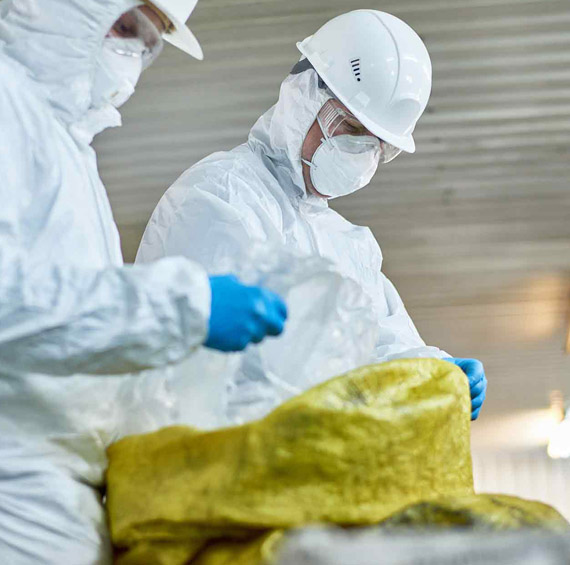Professional Biohazard Cleansing and Purification for Blood, Bodily Fluids, and Hazardous Products
The potential health and wellness dangers linked with direct exposure to biohazards highlight the crucial requirement for precise handling and extensive cleanup. As we browse the detailed landscape of biohazard cleaning, understanding the nuances of regulations, compliance, and the specific devices at play becomes imperative in ensuring a secure and comprehensive purification procedure.
Health And Wellness Dangers of Biohazard Exposure
Exposure to biohazards postures significant health threats that can lead to severe repercussions for communities and individuals alike. Biohazards include a wide range of biological compounds, consisting of blood, physical liquids, mold, bacteria, viruses, and other potentially transmittable materials. When people enter into contact with these biohazards, whether via accidents, improper handling, or ecological direct exposure, they encounter the danger of contracting severe illnesses or illness.
Among the key health dangers connected with biohazard exposure is the transmission of infectious illness. Bloodborne pathogens such as HIV, hepatitis B and C, and different germs can be existing in biohazardous products, posing a straight risk to human wellness. Breathing in air-borne biohazards like mold spores or entering contact with polluted surface areas can likewise lead to respiratory system concerns, allergies, and other damaging health and wellness results.
In addition, biohazard direct exposure can have lasting health and wellness effects, with some conditions manifesting years after the first contact (Blood Cleanup). Consequently, it is critical to prioritize correct biohazard cleaning and decontamination to reduce these health and wellness dangers and make sure the security of areas and individuals

Specialized Training for Biohazard Cleanup
When it concerns taking care of biohazard cleaning successfully and securely, specialized training plays an essential role in guaranteeing correct purification procedures are adhered to. Biohazard cleaning requires particular knowledge and skills to efficiently alleviate risks connected with bloodborne pathogens, physical liquids, and harmful materials. Professionals trained in biohazard clean-up undergo extensive guideline on exactly how to safely manage, eliminate, and take care of biohazardous materials to avoid contamination and direct exposure.
Specialized training for biohazard cleanup covers a variety of important subjects, including appropriate personal safety tools (PPE) usage, bloodborne pathogen recognition, decontamination techniques, and unsafe waste disposal procedures. People trained in biohazard clean-up are furnished with the necessary knowledge to assess contamination degrees, recognize possible threats, and apply suitable clean-up procedures in compliance with regulatory criteria.
Continual training and education and learning are paramount in the area of biohazard clean-up to stay updated on the most recent decontamination innovations, safety and security procedures, and policies. By purchasing specialized training, biohazard cleaning experts can properly react to emergency situation clean-up circumstances and secure both public wellness and the atmosphere.
Relevance of Proper Purification Techniques
Making use of proper purification methods is critical in biohazard clean-up to efficiently remove harmful products and lessen health risks. Effective decontamination not only guarantees the removal of visible traces of blood, bodily fluids, and other biohazards but also targets undetectable virus that may pose severe health and wellness dangers otherwise effectively removed. By complying with stringent decontamination procedures, trained specialists can dramatically lower the risk of exposure to harmful microbes, infections, and bacteria that might result in infections or diseases.
Correct decontamination strategies include the usage of specific tools and disinfectants that are especially designed to reduce the effects of biohazards properly. Complete cleaning and sanitation of contaminated locations are vital to avoid the spread of microorganisms and ensure a safe environment for owners. Furthermore, the correct disposal of biohazardous waste complying with purification procedures is essential in avoiding contamination of other surface areas or individuals.

Tools and Tools for Safe Cleanup
The correct equipment and tools play a vital duty in making certain the risk-free and efficient cleanup of biohazardous products. When managing blood, bodily fluids, or harmful products, biohazard cleaning specialists rely upon specialized equipment to reduce direct exposure dangers and thoroughly decontaminate the afflicted location. Personal safety equipment (PPE) such as handwear covers, goggles, coveralls, and masks are important to protect versus direct contact with potentially transmittable products. In addition, biohazard cleaning sets consisting of anti-bacterials, absorbent materials, and biohazard bags are used to securely dispose and include of infected things. Blood Cleanup.
Advanced cleansing devices like hospital-grade anti-bacterials, HEPA-filtered vacuum cleaners, and misting machines are used to sanitize use this link surfaces and get rid of biohazards properly. Specialized devices such as sharps containers and biohazard waste disposal containers are utilized to safely take care of sharp items and biohazardous waste products. By using the best devices and tools, biohazard cleansing professionals can make sure a comprehensive clean-up procedure that focuses on safety and security and minimizes health dangers for both employees and owners of the affected space.
Rules and Conformity in Biohazard Cleansing
Appropriate adherence to regulations and compliance criteria is extremely important in biohazard cleaning to guarantee the safety of both employees and the atmosphere. Federal government firms such as OSHA (Occupational Safety and Health Administration) and the EPA (Epa) have established details guidelines see this for biohazard clean-up procedures to decrease health threats and environmental contamination. These laws cover an array of aspects including the handling, transportation, and disposal of biohazardous products, as well as the required training and safety devices needed for employees associated with the clean-up process.
Biohazard cleaning business have to stay up-to-date with these policies to ensure that their procedures meet the needed safety standards. Failure to follow these laws can cause extreme effects, consisting of penalties, lawsuit, and jeopardizing the wellness of people and the atmosphere. By complying with strict laws and conformity procedures, biohazard cleaning companies can efficiently mitigate risks and guarantee a risk-free and comprehensive cleaning process for all events involved.
Conclusion
Finally, biohazard cleaning and decontamination require customized training, appropriate strategies, and adherence to laws. Exposure to blood, physical fluids, and unsafe products presents considerable health dangers, making it crucial to make use of the best tools and devices for safe clean-up. By adhering to rigorous procedures and standards, specialists can successfully alleviate the threats related to biohazard exposure and ensure the security of both themselves and others.
As we browse the elaborate landscape of biohazard clean-up, recognizing the subtleties of laws, conformity, and the customized equipment at play ends up being imperative in guaranteeing a risk-free and extensive purification process. (Blood Cleanup)
When it comes to managing biohazard clean-up effectively and safely, his response specialized training plays a fundamental function in ensuring appropriate decontamination procedures are complied with.Making use of correct purification strategies is critical in biohazard cleaning to efficiently remove dangerous materials and minimize wellness risks. Additionally, biohazard cleansing packages including anti-bacterials, absorptive materials, and biohazard bags are used to safely dispose and consist of of infected products.
Federal government companies such as OSHA (Occupational Safety and Health And Wellness Administration) and the EPA (Environmental Security Agency) have actually established particular guidelines for biohazard clean-up procedures to decrease health risks and ecological contamination.